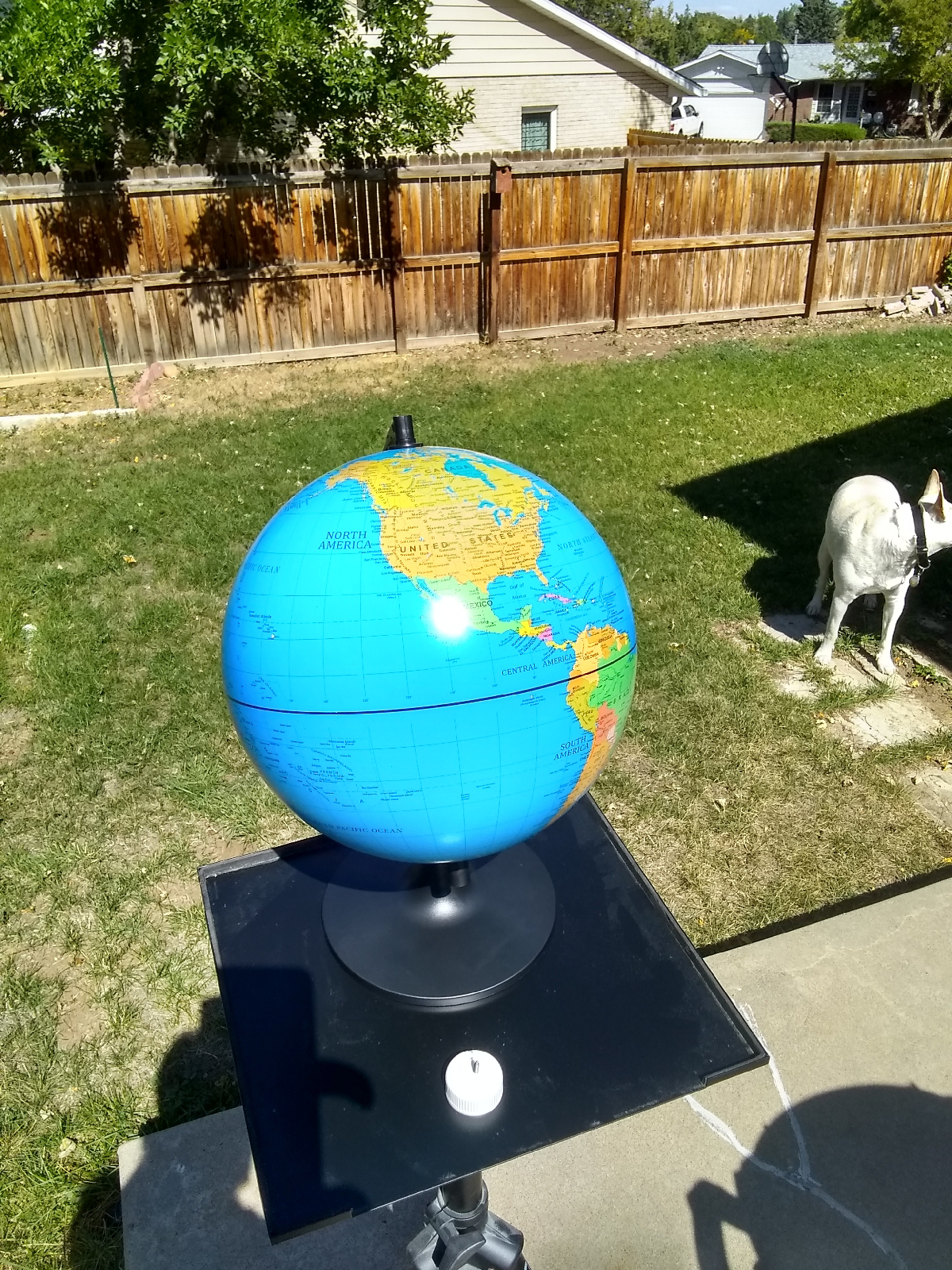A world globe can be used as a sundial that can tell you the time of day anywhere on Earth, time of sunrise and sunset, how the seasons work, and many other things. All you have to do is orient it in the same direction relative to the sun as the Earth. That way, it models Earth in space. Here's how you do it.
You will need a surface that can be tilted (and, possibly a clamp for the base of the globe to keep it from tilting over. Alternately, there are globes that can be tilted in respect to the base.) You will also need a mini-gnomon. A gnomon is just a vertical rod that will cast a shadow in the sun. It has to be small enough to position on the globe's surface. I used a plastic bottle cap and drove a screw through the center from underneath. (The screw should be as near a right angle to the surface of the cap as you can make it. You can test it with a carpenter's angle or even the sides of a sheet of paper.) After using a carpenter's level, or a phone app level to level the surface you will place the globe on, place the cap on the surface and mark the edge at the point north of the screw. Use a magnetic compass or a phone app but don't forget to look up the correction for true north from where you live and add or subtract it from your compass bearing. (Do an Internet search for "magnetic declination".)
With the line between the screw and the edge mark pointing north, make another mark with an erasable marker at the end of the screw's shadow from the sun.
Now, set your globe on the surface with the north pole pointing north (according to your compass with the correction to true north.). Rotate the globe until your position is on top.
Now for the fine tuning. Place the mini-gnomon pointing north directly over your position on the globe. If the sun's shadow on the globe and the sun's shadow on the Earth are oriented the same, they will both be oriented the same in space in respect to the sun, so tilt and rotate your globe until the tip of the screw's shadow touches the mark you made earlier at the shadow's tip. Your globe is now aligned.
What time is it? One way to tell is to watch your mini-gnomon to see when it's shadow is shortest - that's solar noon. During daylight savings, the local time will be an hour behind solar noon.
You can find where on the globe that it's solar noon by moving the mini-gnomon around to find the place where it's shadow is shortest. That will be a line of longitude. Knowing that every 15 degrees of longitude is an hour will allow you to calculate the time anywhere on Earth (at least, while the sun is out.)
You may have heard that the sun is directly overhead on the equator at noon each day. Try it out.
When it's solar noon where you are, place the mini-gnomon directly over your position and slide it straight down your line of longitude to the equator. Does the screw cast a shadow? Not if it's one of the two annual equinoxes. On any other day, the sun will be exactly overhead somewhere north or south of the equator.
You can easily see where sunset and sunrise is by finding the day-night divider line on your globe.
At my current time, here, sunset is slowly creeping off Africa into the Atlantic.
There is a lot you can do with the universal sundial. Can you use a thermometer to measure differences in temperature on the surface of your globe according to the angle the sun is shining on it? That's what causes the seasons.
Once you have a globe oriented, you can use a clamp or clay or some other way to freeze it in position and make a cover to keep it out of the weather. Then you can use it all year.






No comments:
Post a Comment